- Home
- Joan Smith
A Brush with Death Page 2
A Brush with Death Read online
Page 2
“What guy?” I repeated.
“Well if you must know, he's a forger, Yves Latour by name, but..."
Blood sang in my veins. My ears hummed, and the portals of paradise opened a crack. “I'll study tonight. Tell me all about him while we drive to his place. Are we going to do a stakeout?"
He shook his head and laughed. “It looks like it."
CHAPTER 2
“Where does this Yves Latour live?” I asked.
“That's the first thing I have to find out. He won't be in the phone book. Let's sit a minute while we sort this out."
We sat in the marble and plush lobby of the Bonaventure while he told me about Yves Latour.
“Since art has become such big business, there are a lot of guys doing forgeries and imitations. Of course some of them get caught by all the new analytical methods—X-ray rigs, analyzing the pigments by optical emission spectographs, infrared spectrometer. They use a laser microanalyzer and gas chromatograph—mass spectrophotometer and..."
“I get the idea, John."
“The company sent me on a course,” he grinned. “They have lots of other complicated technical stuff. The Doerner Institute in Bavaria is one of the best, if not the best for that kind of work. Even with all that technology, some of the forgers still escape them."
“Can't all those spectro things tell them the age of the canvas and paints?"
“A lot of the old masters used wood, not canvas. The forgers have gone hi tech too. They pry off an old table top of the right period, and use the right pigments. Get the craquelure quality of the finish by putting it in an oven. One guy even ground up an old lead clock weight to add to his white pigment, to beat the half-life test. The guys are good. In spite of all the technology, the human eye and common sense are still the best detectors."
“Does Yves Latour do all these tricks?"
“Some of ‘em. Van Gogh moved around a lot, and he was usually so poor that he used whatever came to hand. The same colors keep cropping up—vermilion, cadmium yellow, ultramarine, cobalt, viridian, but in different kinds of pigments, so he's hard to pin down. He even did some on coarse, unprimed canvas—like hessian, though he usually used ordinary primed canvas. He was a bit of an experimenter, so you can't just rule out anything of the right age."
“His style is certainly distinctive though."
“A distinctive style is the easiest kind to forge, believe it or not. What tipped us off is that too many ‘new’ Van Gogh's started turning up. Not copies, new paintings never seen before. Of course Vincent was prolific, but even he had his limits. Latour started with sketches. Sold half a dozen, then struck out into oils. That's where they caught him. They found impurities in his reds. He escaped Europe a step ahead of Interpol's Art and Fraud Squad and skipped to North America. The guy's a Belgian, incidentally."
“Like Hercule Poirot."
“Yeah, and about that cagey. But he doesn't speak English, just French and Dutch, so we figured he came to the biggest French-speaking city outside of Europe, Montreal."
“Where does your company come into it?"
“We took a hosing on Latour. Two of his forged drawings were stolen shortly after they were bought. We have reason to believe Latour ‘sold’ them to a friend, who arranged to have them stolen, and they split the hundred thou we paid in insurance. So I'm here to find Latour and whop a confession out of him, and make him promise not to be a bad boy again. If he pulled his sell and steal act on paintings instead of just sketches, we could be in big trouble."
“And of course you're here to see me,” I reminded him with a sapient eye.
“Hey, that's the main reason. But while I'm here ...'
“Let's find a phone book."
“He won't be listed as Yves Latour. What we'll have to do is hit some galleries and find out who's been trying to peddle some Van Goghs."
“Let's try the phone book at least. Maybe he's anglicized his name to Tower. That's what Latour means."
“It's worth a shot."
Incredible as it seems, there was a Y. G. Tower on Côte des Neiges. John said Yves's second name was Gerard. He had the car brought around and I directed him up the mountain to Côte des Neiges. The name seemed particularly suitable that day. It looked like a snow coast. I peered out the car window for numbers while John set his jaw to the precarious task of driving in the snow, in Montreal's lawless traffic. As we drew near, we realized Latour lived in one of the apartment high-rise buildings, which made it possible for us to park in the visitors’ parking lot. We pressed half a dozen buttons to get into the building. Y. G. Tower was on the seventh floor, apartment 5. We took the elevator up and began looking for his door.
It occurred to me that a forger might keep a gun, and when he found himself in imminent danger of arrest, he might use it. “Do you have a gun?” I asked John.
He patted his pocket and grinned. “I never leave home without it. But I don't think we're going to visit Yves yet. I'd like to get in and have a look around first. It might be interesting to see who he's forging these days."
“You can do that after you arrest him."
“I'm not a cop, and I'd just as lief we keep the fuzz out of this, for the time being at least. I want a nice leisurely look around, which I won't get if Yves puts up a fight. If what I find is interesting, I'll call in the A and F boys. For that matter, we don't even know Tower is Latour."
“What do we do if he's at home?"
He took a cigarette lighter and a package of cigarettes out of his pocket. John doesn't smoke, so I knew he was up to something. “A camera?"
“My Bic-Pic,” he grinned, and lit it. It really was a lighter too. “I'll get a shot of Yves for my own personal files. When he leaves, we'll come back and search."
We were checking out the apartment numbers as we went along the hall. “It must be around that corner,” I said. “We can't just lurk around the hall for hours on the chance that he'll come out."
John stepped up and tapped on the door. “The French I hear on the street here isn't much like the French I know. In case Latour speaks the local lingo, you'd better talk to him."
“What will I say?"
“Wing it.” I stared in mute horror. There were sounds behind the door. “You can ask him if he's interested in donating to the orphans’ overcoat fund,” John said, taking out a cigarette and readying his Bic-Pic.
“You've got to be kidding!"
Before we had time for argument, the door opened and a friendly looking man said, "Bonjour. Puis-je vous aider?" He didn't speak the local patois. And of course he didn't speak English. My French was coming along, but I felt so foolish I didn't want to dun him for money. To stall for time, I said, "Parlez-vous anglais, Monsieur?"
I saw John stick a cigarette between his lips, take aim and light it. "Un peu," the man said, still smiling. He really seemed very nice. He had a lot of curly hair, dark brown, streaked with gray. I thought he was about thirty-nine or forty. The hair nestled on his forehead, and clung to his neck. He wore a mustache not unlike John's, which is full and untrimmed. The outfit he wore was slightly Bohemian, which supported the artist theory. His loose purple shirt was embroidered in the front, vaguely suggestive of the sixties.
Confusion made me nervous, and I stammered out a foolish question in franglais about wanting his views on the commercialization of Christmas for my university newspaper. He asked me what university I attended, and of course I said McGill.
"Ah, c'est bon. Mes élèves ne sontpas si belles," he smiled, including John to avoid the idea he was hitting on me. "Je suis professeur à l'Ecole des Beaux Arts."
John lit his cigarette again, for good measure. The man went on to say that he was just on his way to class, but if I was doing a survey, I could put him on the side of the angels as deriding the degradation of a holy feast to a money-spending spree. “Adults are old enough to realize the meaning of Christmas is love, not commerce."
I said, "Merci beaucoup, Monsieur," and we left.
&nb
sp; Once the door was closed I turned in excitement to John and whispered, “He teaches at the Beaux Arts, John! It's got to be Latour."
“Of course it is. The guy's as phony as a three dollar bill. Funny he gave himself an English name, when he doesn't speak the lingo. His accent sounded European, didn't you think?"
“It sure wasn't joual.” We headed to the elevator.
“What's joual?"
“That dialect you hear in the streets. It's the French-Canadian accent, kind of like English Cockney, or American Brooklynese."
“Funny name they chose for it."
“It's the way they pronounce cheval."
“So you're learning to speak horse?” he asked, and laughed.
“Only incidentally. That's not what they teach at McGill. It looks as though this is your chance to get into Latour's apartment. He said he was leaving for a lecture."
John looked cagey. “That's what he said. It might be worth following him. If he is going to a class, we'll have time to come back and search. If he got the idea I was doing more than lighting a cig, he might have been lying."
“Why should he be suspicious?"
“Don't they teach Shakespeare at that college? ‘Suspicion always haunts the guilty mind.’ He took a pretty good look at us.” John butted the cig in the ashtray by the elevator door and we went downstairs.
“I thought he was nice,” I said.
“That wouldn't be because he thought you were belle, would it? Crooks are often nice—friendly, I mean."
“His views on Christmas too—he didn't sound like a money-mad sort of person."
“He gypped the company out of a hundred grand,” John said firmly, and we went to wait in the car.
In about ten minutes, Latour drove out of the parking garage in the back. He was wearing a felt cap and driving a very nifty little new Jag. Not many of my professors could afford wheels like that. We followed him to the Ecole des Beaux Arts. When he parked and went inside, we figured he'd told the truth about that anyway and hustled back to his apartment.
“How are you going to get in?” I asked.
“If I can't jimmy the lock, I'll use this.” He flashed a Royal Canadian Mounted Police badge at me. I imagine there was also an FBI and Scotland Yard and other police badges in the wallet as well.
“The janitor'll tell him he was searched,” I warned.
“We'll cross that bridge if we come to it."
We didn't come to it. When we got back to Côte des Neige, we got into the building by the same ruse as before, and John jimmied the apartment door with a piece of hardware called a spider. The apartment looked innocent, with the sort of stuff you'd expect in a well-heeled bachelor's pad. There was a brown leather sofa, a wall of stereo equipment, and a lot of books. The original abstract expressionist painting on the wall wasn't bad, but it didn't give any impression it had been done by a genius. The minute we were in the door, I could smell the paints and turpentine. John followed his nose to the studio. It was a two-bedroom apartment, with one room turned into a studio.
I followed him and looked around the room. It had the usual stuff, an easel, tables with supplies and pots of brushes standing in turpentine, a linoleum over the carpet to protect it. There were paintings standing against the walls of the room. They were in the same style as the one in the living room. The backgrounds were white, with angry slashes of color laid on with a wide brush. Some of them were red and black and yellow, a few had blue and green. All were signed Tower. I cocked an eyebrow at John. “Van Gogh it ain't."
'Window dressing,” he said curtly, and pointed to the easel. Beside it there was a table with a slide projector and a metal measuring tape. On the far wall, there was a screen to receive the image. Sean flicked the switch and a picture appeared on the screen. It was a Van Gogh of a seated woman in a white dress with brownish hair. At least it looked like a Van Gogh, one I had never seen before. In daylight, the colors were washed out, but it certainly had the unique tortured brushstroke of Van Gogh.
“Mademoiselle Gachet,” John said. “The original's in the Van Gogh Museum in Amsterdam. She was his doctor's daughter, and the love of Vincent's life. Latour's forging all right. The goods have got to be here somewhere."
We began lifting the top row of abstracts lining the walls to peer beneath. He lifted out a portrait of a young redheaded woman, and another of a grizzled old man. “This is more like it!” John exclaimed.
We examined them, and it was true they showed more talent than the angry slashes of color. I mean you could tell the artist really could paint, but these two bore no resemblance to Van Gogh. The woman wasn't a real beauty, but Latour had made her look like a Pre-Raphaelite madonna, with a pale face and streaming hair.
“Keep looking,” John said. “I'm going to scan his bedroom. People always hide valuable stuff in their bedrooms."
I discovered what I thought might be an effort at forging a Kreighoff, an old Canadian painter who was beginning to sell for interesting dollars. It was a winter scene of a horse-pulled sleigh cutting through the snow. I went to tell John, and found him on his knees.
“Say one for me while you're down there,” I called from the doorway.
He looked over his shoulder, and I knew by the wicked gleam in his eyes that he had found the mother lode. I hurried forward and watched as he turned over the paintings, one by one. They were done on stretched canvas, unframed. The canvas wasn't white around the edges, but well weathered, to pose as nineteenth century. It was almost impossible to believe that what we were looking at was not the work of Vincent Van Gogh. The peculiar, twisted brushstrokes were there, the vibrant colors, even the subject matter: a sailing boat, a green room with a yellow chair, an old man with a pipe, the woman we had just seen on the screen. John kept turning. On the bottom, there were some in Van Gogh's earlier dark and austere style, like the famous Potato Eaters, done before he fell in with the Impressionists in Paris. There were three in that style. John pulled out his Bic-Pic and started snapping pictures.
“They look brand new. They wouldn't fool anyone,” I pointed out.
“They would by the time he's finished with them."
We had been there quite a while, and I was becoming nervous. “Looks like it's time to call the Arts and Fraud Squad,” I reminded him.
“Maybe,” John said, and continued shifting the pictures and snapping them.
“What do you mean, ‘maybe'? You've got him red-handed."
His eyes glittered like diamonds. I had never seen him so excited. “It isn't forgery till he tries to sell them as originals. We're dealing with more than a minor league forger here, Cass. I think we've stumbled into something big."
“He seems to be going into retail forgery. Let's get out, John. He might be back soon."
“Right. Take a look around and make sure we didn't leave any clues. I just want to have a quick rifle through his desk."
John arranged the paintings carefully and returned them to their resting place under Latour's bed. I quickly rearranged the paintings in the studio and checked the apartment while John went through the desk in the bedroom. In about three minutes he came out, still glowing with success. He looked as if he'd just won the state lottery.
“Let's get out while the getting's good,” he murmured.
We checked the peephole in the door for traffic in the hall. It was empty, and we left. I swear John was trembling with excitement. His hands were shaking when he started the car. He didn't think to ask me where I lived or anything. He just headed back to the Bonaventure. I didn't want to risk an accident, so I didn't pester him with questions, but I was nearly bursting with curiosity.
CHAPTER 3
“Want some coffee?” John asked, when we went into the hotel lobby. “It's colder than a witch's ti—ticker in here. Ticker—that's heart! Witches have cold hearts."
“To say nothing of tits. I'd love some coffee, thanks."
He looked sheepish. “We'll take it upstairs. We can't talk in public."
“How exciting! I'm being invited up to a bachelor's hotel room—to talk."
“Sex fiend!” he charged approvingly. “Cream and sugar?"
“Cream, no sugar.” No point trying to diet a few days before Christmas. “Make that double cream."
But he was too impatient to go to the coffee shop. “What the hell, we'll have room service bring it up. After a break like this..."
The excitement was still there. We rushed up the elevator and along the hushed halls to John's room. I don't suppose the Bonaventure has a bad room, but this one was something special. The hotel rooms I've stayed in are indistinguishable in my mind. The general type consists of a room about ten feet by twelve with a very noisy air conditioner in the corner creating an unpleasant draft. It is painted off-white with pictures from Woolworth's on the walls—maybe something by the starving artists, tops. The bedspread is flowered, to hide spots I suspect. and weighs about a hundred pounds.
John's rooms—a suite, which gave delightful intimations of future pampering—were much larger, quieter, and classier.
The draperies and bedspread were a symphony of unspotted, dull gold fabric. If there was an air conditioner in the suite, it performed discreetly. We went to the little sitting room, which had a fridge and small table and sink as well as a sofa; I threw my books on the table and wiggled out of my coat while John ordered coffee.
“All right, tell me! I'm bursting with curiosity,” I said, when he came back.
He was too restless to sit down. He paced the room, showing off his nice broad shoulders and lean torso, which looked very good in that Savile Row suit. “Like I said,” he began, with his customary disregard for the fine points of grammar, “I've been swatting up on Van Gogh. I have to verify it, but if all those pictures Latour was forging aren't from the Van Gogh Museum in Amsterdam, I'm a wallaby's uncle."
I blinked, and latched on to a totally irrelevant point. “Have you been to Australia lately, John?"
He scratched his neck and gave me a rancid look. “How did you know Penderson got the Ashton case in Sydney?"

 A Kiss in the Dark
A Kiss in the Dark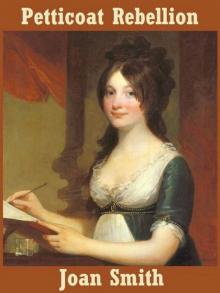 Petticoat Rebellion
Petticoat Rebellion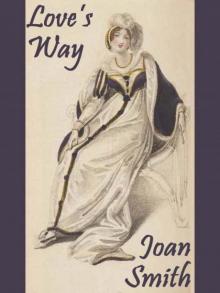 Love's Way
Love's Way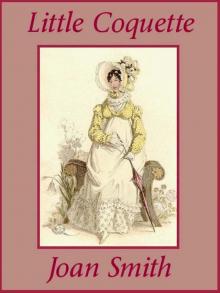 Little Coquette
Little Coquette Memoirs of a Hoyden
Memoirs of a Hoyden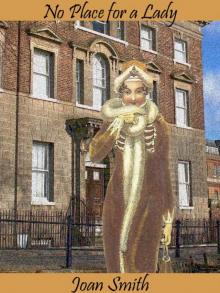 No Place for a Lady
No Place for a Lady Perdita
Perdita Talk of the Town
Talk of the Town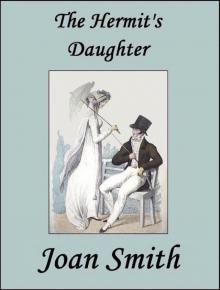 The Hermit's Daughter
The Hermit's Daughter Moon Love
Moon Love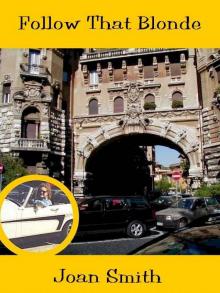 Follow That Blonde
Follow That Blonde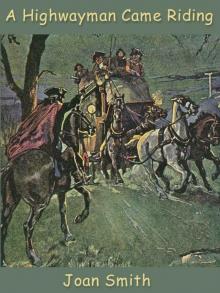 A Highwayman Came Riding
A Highwayman Came Riding The Great Christmas Ball
The Great Christmas Ball Jennie Kissed Me
Jennie Kissed Me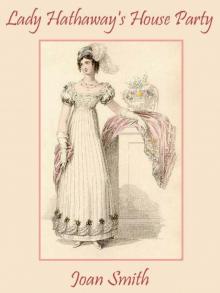 Lady Hathaway's House Party
Lady Hathaway's House Party Aunt Sophie's Diamonds
Aunt Sophie's Diamonds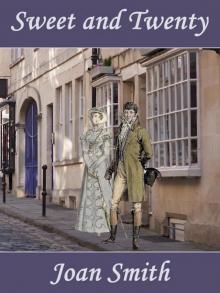 Sweet and Twenty
Sweet and Twenty Clouds of Deceit
Clouds of Deceit What Men Say
What Men Say The Devious Duchess
The Devious Duchess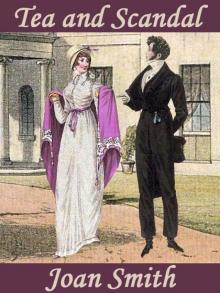 Tea and Scandal
Tea and Scandal Bath Scandal
Bath Scandal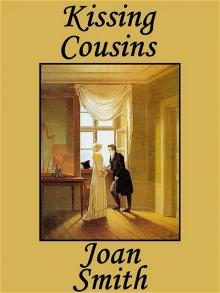 Kissing Cousins
Kissing Cousins Love's Harbinger
Love's Harbinger The Waltzing Widow/Smith
The Waltzing Widow/Smith The Polka Dot Nude
The Polka Dot Nude Thick As Thieves
Thick As Thieves Murder on Ironmonger Lane
Murder on Ironmonger Lane Dame Durden's Daughter
Dame Durden's Daughter Endure My Heart
Endure My Heart The Savage Lord Griffin
The Savage Lord Griffin Murder's Sad Tale
Murder's Sad Tale Imprudent Lady
Imprudent Lady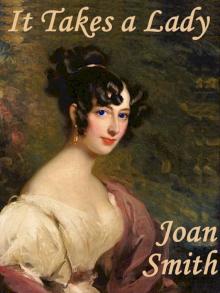 It Takes a Lady
It Takes a Lady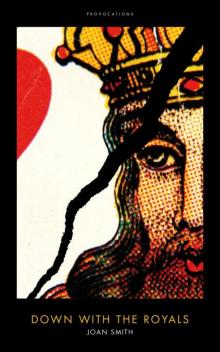 Down With the Royals
Down With the Royals Aurora
Aurora A Brush with Death
A Brush with Death The Black Diamond
The Black Diamond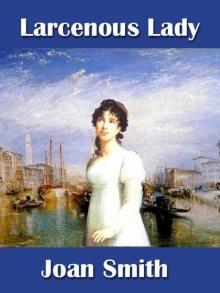 Larcenous Lady
Larcenous Lady To Mourn a Murder
To Mourn a Murder Francesca
Francesca Murder and Misdeeds
Murder and Misdeeds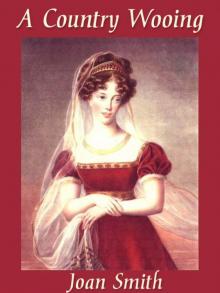 A Country Wooing
A Country Wooing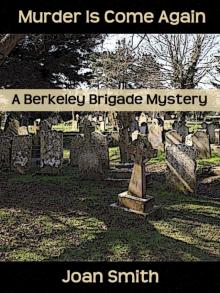 Murder Is Come Again
Murder Is Come Again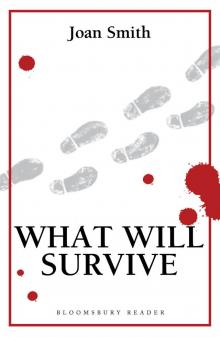 What Will Survive
What Will Survive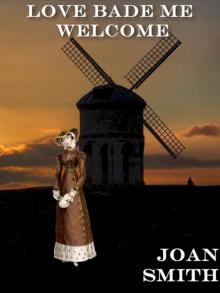 Love Bade Me Welcome
Love Bade Me Welcome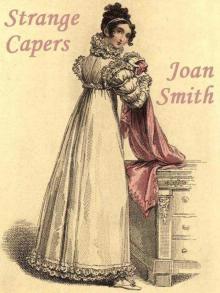 Strange Capers
Strange Capers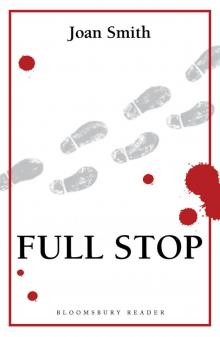 Full Stop
Full Stop Loretta Lawson 01 - A Masculine Ending
Loretta Lawson 01 - A Masculine Ending Murder While I Smile
Murder While I Smile Winter Wedding
Winter Wedding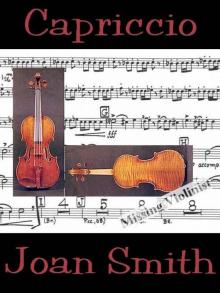 Capriccio
Capriccio Blossom Time
Blossom Time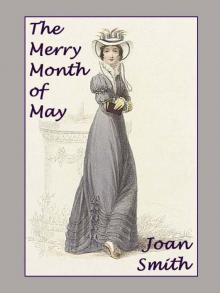 The Merry Month of May
The Merry Month of May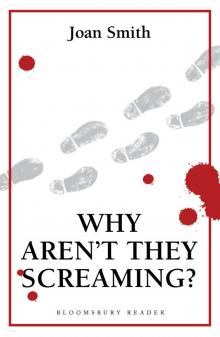 Why Aren't They Screaming?
Why Aren't They Screaming?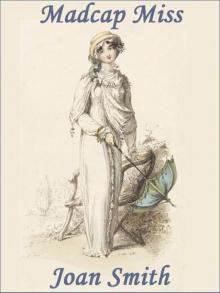 Madcap Miss
Madcap Miss Delsie
Delsie Reluctant Bride
Reluctant Bride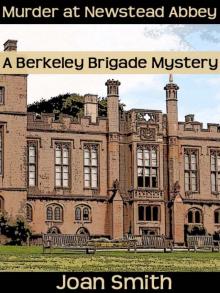 Murder at Newstead Abbey
Murder at Newstead Abbey A Tall Dark Stranger
A Tall Dark Stranger Letters to a Lady
Letters to a Lady Country Flirt
Country Flirt Let's Talk of Murder
Let's Talk of Murder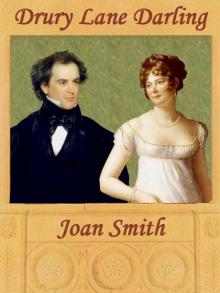 Drury Lane Darling
Drury Lane Darling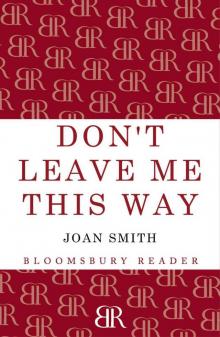 Loretta Lawson 03 - Don't Leave Me This Way
Loretta Lawson 03 - Don't Leave Me This Way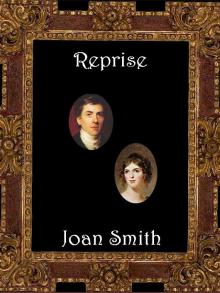 Reprise
Reprise Lady Madeline's Folly
Lady Madeline's Folly Olivia
Olivia Midnight Masquerade
Midnight Masquerade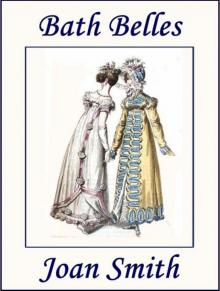 Bath Belles
Bath Belles Lace for Milady
Lace for Milady Silken Secrets
Silken Secrets Minuet
Minuet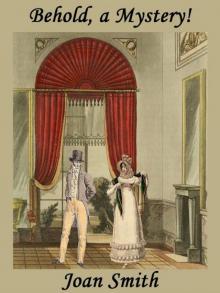 Behold, a Mystery!
Behold, a Mystery! Babe
Babe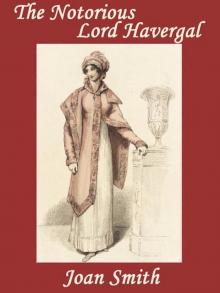 The Notorious Lord Havergal
The Notorious Lord Havergal Romantic Rebel
Romantic Rebel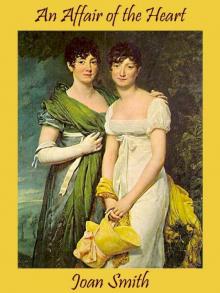 An Affair of the Heart
An Affair of the Heart Wiles of a Stranger
Wiles of a Stranger The Royal Scamp
The Royal Scamp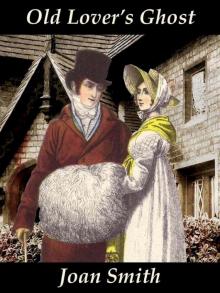 Old Lover's Ghost
Old Lover's Ghost The Virgin and the Unicorn
The Virgin and the Unicorn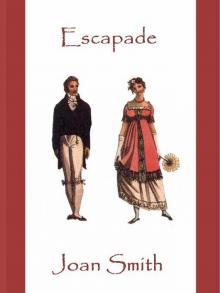 Escapade
Escapade A Christmas Gambol
A Christmas Gambol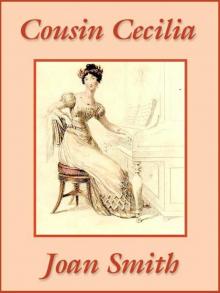 Cousin Cecilia
Cousin Cecilia Friends and Lovers
Friends and Lovers An Infamous Proposal
An Infamous Proposal Regency Masquerade
Regency Masquerade Shadow of Murder
Shadow of Murder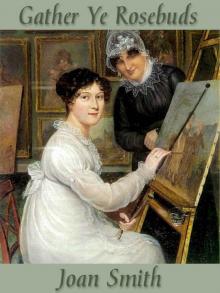 Gather Ye Rosebuds
Gather Ye Rosebuds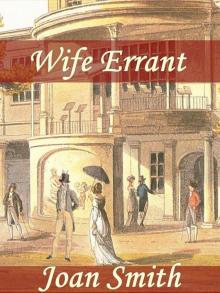 Wife Errant
Wife Errant![[Berkeley Brigade 10] - Shadow of Murder Read online](http://i1.bookreadfree.com/i2/04/11/berkeley_brigade_10_-_shadow_of_murder_preview.jpg) [Berkeley Brigade 10] - Shadow of Murder
[Berkeley Brigade 10] - Shadow of Murder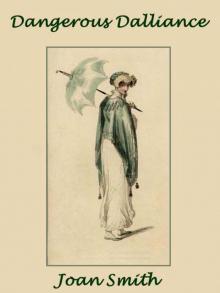 Dangerous Dalliance
Dangerous Dalliance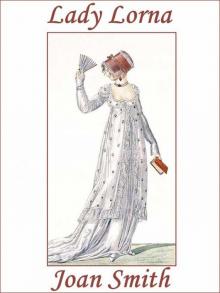 Lady Lorna
Lady Lorna Murder on Charing Cross Road
Murder on Charing Cross Road Rose Trelawney
Rose Trelawney Prelude to Love
Prelude to Love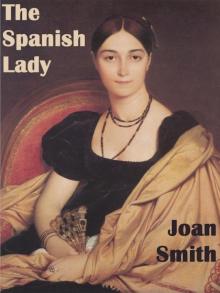 The Spanish Lady
The Spanish Lady Damsel in Distress
Damsel in Distress Oh Miranda!
Oh Miranda! The Blue Diamond
The Blue Diamond